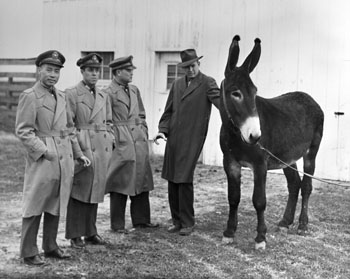WWI, Depression, and WWII Period (1917-1945)

>Home
>History Introduction
>Next
The 1920s witnessed another raft of new inventions that revolutionized many households. Many of these new inventions required electricity, and the Duck River watershed became home to a number of hydroelectric sites a decade before the creation of the Tennessee Valley Authority (TVA). Electricity replaced steam in mills and factories and made it possible for families to buy radios and refrigerators, the two electric items they desired most, in that order. Though they had been mildly successful before the war, movies became an international obsession during World War I. Movie houses sprang up all over the region, making movie-going the number one entertainment in America, outselling baseball and sporting events.
The Great Depression of the 1930s did not have the same devastating impact on the Duck River watershed (nor Tennessee, for that matter) due to a number of factors, not least of those were the well-placed Tennesseans in Franklin D. Roosevelt’s administration. (Top-ranking Tennesseans included Cordell Hull, Secretary of State; James Byrne, Speaker of the House; Kenneth McKellar, Chair of the Senate Finance Committee; Abe Fortas, Roosevelt’s personal counsel; among others). A number of New Deal projects employed people in the area and also provided new public buildings, roads, and other services. The Civilian Conservation Corps and the Works Progress Administration worked on land reclamation, reforestation, and the creation of new state parks while TVA became the main provider of electricity and worked on flood control projects.
The Duck River region played a critical role in World War II in a number of ways. Camp Forrest (formerly Camp Peay) acted as a major training facility for U.S. Army personnel. It also hosted a number of exercises during the Tennessee Maneuvers, which prepared soldiers for the eventual invasion of Europe. The live-training
exercises often pitted young soldiers against civilians as they drove their tanks across farmers’ fields and pasture land, tearing up everything as they went. The maneuvers also introduced outsiders to the region in large numbers for the first time since the Civil War. Camp Forrest also housed German prisoners of war.
Also during the Tennessee Maneuvers, Sarah Cannon of Centerville, better known as Minnie Pearl, became a national star. Though she had been a regular performer at the Grand Ole Opry before the war, it provided her with a national stage. Minnie Pearl traveled across the United States, performing at all of the army bases in the lower 48 with the mobile Opry troop known as the Camel Caravan. She earned the respect and adoration of a generation through her efforts to bolster troop morale.
World War II sparked considerable outmigration from the area as young men volunteered or were drafted into service. Many men and women left the area to seek jobs out of state in war-related industries. The war placed a number of privations upon the citizenry who had to deal with rationing of all sorts, from shoes to sugar. Some staples, especially coffee, proved almost nonexistent during the war.
During World War II, Shelbyville native Prentice Cooper was governor of Tennessee. Believing the war was an eventuality, Cooper established the Tennessee Preparedness Committee. Headed by Rutledge Smith (who oversaw the draft for the entire Southeast during World War I) and including members such as Sergeant Alvin C. York and aviatrix Cornelia Fort, the committee assessed Tennessee resources and industries and planned for their transition to wartime use. As a result, Tennessee made the transition more smoothly than many other states. During the war, Cooper efficiently managed the state and ran one of the most fiscally responsible administrations in Tennessee history.